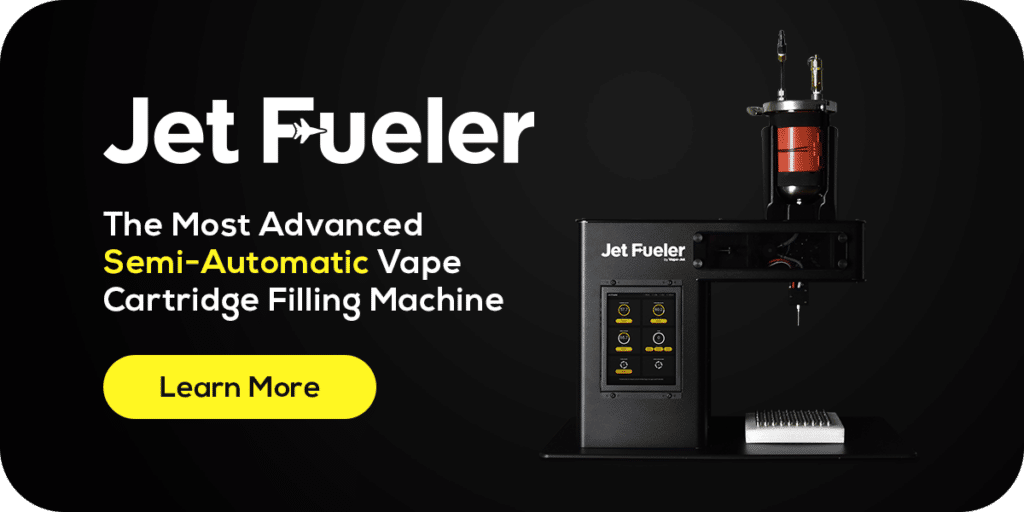Industry Insight
For cannabis oil producers, the importance of CO2 cannot be understated. As the primary solvent in one of the most popular cannabis oil extraction methods in the industry today, the recent CO2 shortage has profound implications for oil production processes. With so much volatility in the market, let’s take some time to think about this CO2 dilemma and propose some solutions so oil producers can keep meeting customer demand while maintaining the same high-quality products consumers deserve.
How did this CO2 Shortage Begin?
As with any global shift in market availability, the reasons for the current CO2 situation are varied. Perhaps most significantly, the Russian invasion of Ukraine has created extensive oil and natural gas supply interruptions in Europe, leading to volatile petrochemical and agricultural markets which directly affect fertilizer production, of which food grade CO2 is a byproduct.
This market uncertainty, tied to lack of supply, has already affected other industries close to cannabis. In the brewing industry, for instance, the impact of the CO2 shortage is already playing out, leading to increased input costs which have numerous upstream and downstream workflow ramifications.
The Significance of CO2 for Vape Cartridge Producers
The benefits of using CO2 for cannabis oil extraction are well-documented, but it’s worth revisiting just how vital CO2 is for vape cartridge production.
As the most common solvent for Supercritical Fluid Extraction (SFE), CO2 earns its place because of multiple factors:
- It is one of the safest non-polar solvents
- It is more dependable during SFE for preserving the compounds found in cannabis
- It can pull various cannabinoids from the plant through fractioning
When Will the Cannabis Oil Extraction Industry Feel the Shortage?
“[CO2 demand] from the cannabis industry, for cannabinoid and terpene extraction, [has] been growing quickly, and not enough new capacity is coming online to compensate.” – Craig Bettenhausen, “US faces CO2 shortage”
The worlds of cannabis production and retail are accustomed to fluctuating markets. Most post-legalization markets, for example, overinvest in production capacity leading to wholesale cost reductions. Dealing with lower prices isn’t new, and it usually leads to consolidation and restructuring until the supply and demand for cannabis come back into alignment. How is this CO2 shortage different, and how is it similar?
Well, although it can be difficult to predict when and how certain industries will react to a decreased CO2 supply, there are some reasonable expectations of when we will start seeing the shortage affect the cannabis industry.
The first people to feel the CO2 supply shortage will be grow and cannabis oil extraction facilities, especially when natural gas and oil consumption spike in winter (Butane Hash Oil extractors will likely feel this pain as well). Accordingly, all cannabis flower, extract, and distillate will probably see cost increases by the end of 2022, which will squeeze profit margins on vape cartridges.
Of course, this spike in the price of natural gas during wintertime will undoubtedly be exacerbated by increased gas exports to Europe from North America. As energy costs inflate due to decreased supply and increased demand, input costs for cannabis cultivation, extraction, and refinement will rise, ultimately yielding lower margins on cannabis products across the board and increasingly small returns.
In short, with high electricity costs, high CO2 costs, and high butane costs, every step in the cannabis product chain will be affected.
So, What’s the Solution?
“Wholesale and retail marijuana prices continue to fall in most states, with production often outpacing consumption… The glut of cannabis products and brands have retailers in many states increasingly discounting their merchandise in hopes of shrinking bulging inventories and boosting sales amid growing competition.” – Andrew Long, “Midyear State Cannabis Sales a Mixed Bag Across the United States”
With such clear indicators of pesky inflation and increased input costs on the horizon, we ought to think of some solutions. After all, we shouldn’t just read this information and run to the closest bar. It’s what we do with the information going forward and how we use it to stay ahead of the curve and prepare for the uncertainty that matters.
So, what can you do?
Solution 01: Invest in Automation
As input costs rise due to CO2 and other raw materials—and oversupply issues continue for the cannabis industry—prices will continue falling, ultimately squeezing out many operators with high costs and low returns. In other words, cost reduction is key, and reducing labor costs with automation may be the only way to compete.
Luckily, this solution is our specialty. At Vape-Jet, we manufacture the most advanced fully-automated (Vape–Jet) and semi-automated (Jet Fueler) vape cartridge-filling systems on the market. In fact, we’ve discussed how vape cartridge automation is one of the most proactive, crucial investments you can make in your cartridge filling process quite a bit.
Not only do our vape cartridge-filling machines fill your cartridges faster, more accurately, and help you overcome cartridge hardware challenges, our team also provides unmatched after-sales support to keep your operation running. That means higher productivity, decreased labor input, and satisfied customers.
Solution 02: Plan for a New Pricing Strategy
As Krista Raymer writes in her article, “to combat price compression, cannabis retailers can use psychology and consumer behavior tendencies to guide them toward certain products or shopping patterns. One important tactic to do this is through the lens of price perception.”
Krista lists three strategies cannabis companies can use to stay ahead: ‘visualization of pricing,’ ‘in-store signage,’ and ‘insignificant numbers.’ Read detailed descriptions of these strategies in “Dispensary Pricing Strategy: How to Combat Price Compression.”
Solution 03: Solventless Cannabis Oil Extraction
As we discussed earlier, CO2 is a dependable solvent for Supercritical Fluid Extraction (SFE). But what if you moved your workflow away from solvents? Well, it is safe to assume that solventless processes will see a significant boost if solvents inflate high enough. If you want to learn more about this cannabis oil extraction method and how it affects production, product quality, and operation costs, start with this article—“Extracting the Bottom Line.”
And That’s Where We Come In
As we watch the CO2 shortage impact other industries around us, cannabis businesses should start preparing for the necessary strategies (cultivation, production, sales, etc.) to combat the inevitable results of price increases in our industry. Automation is one of the most straightforward ways to set your business up for success now and especially when uncertainty starts affecting the markets on which we depend.
Reach out to the Vape-Jet team today, and let’s optimize your operation now and secure your workflow for the long haul.
While you’re at it, don’t forget to sign up for our monthly Re:Fill newsletter to get early access to company updates, product releases, and other exciting announcements. Follow us on the essentials, too: Facebook, Instagram, and LinkedIn.
Interested in our new partner program? Learn more here.







